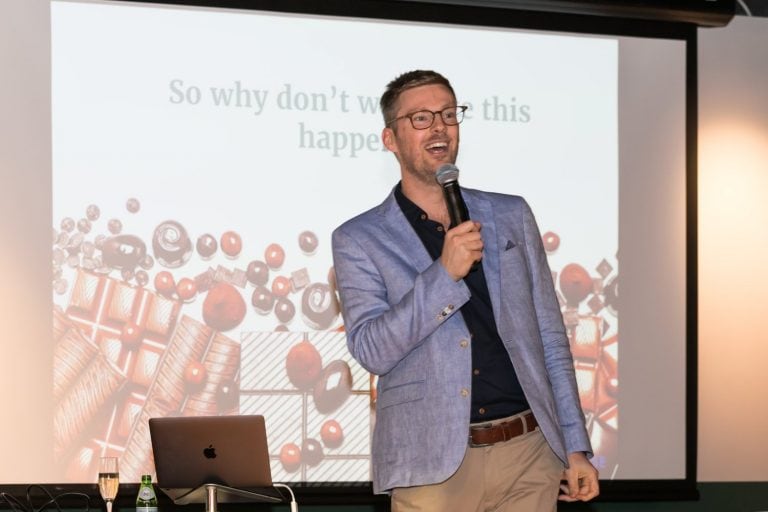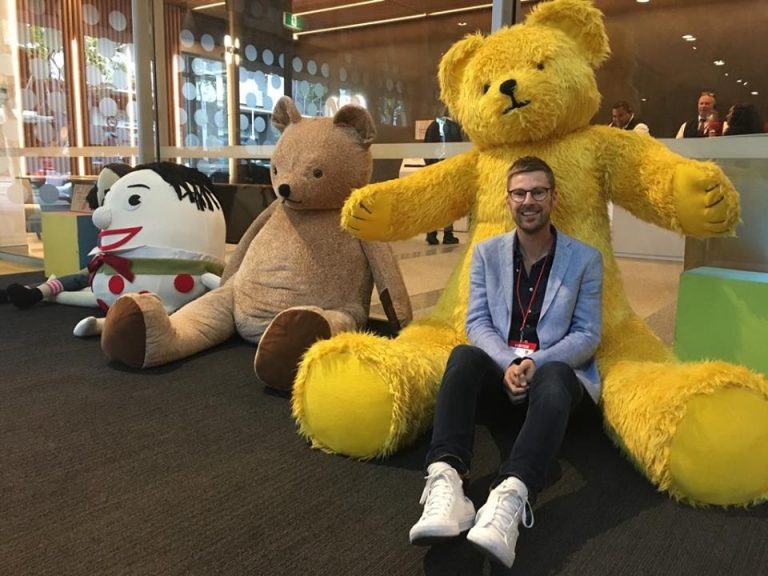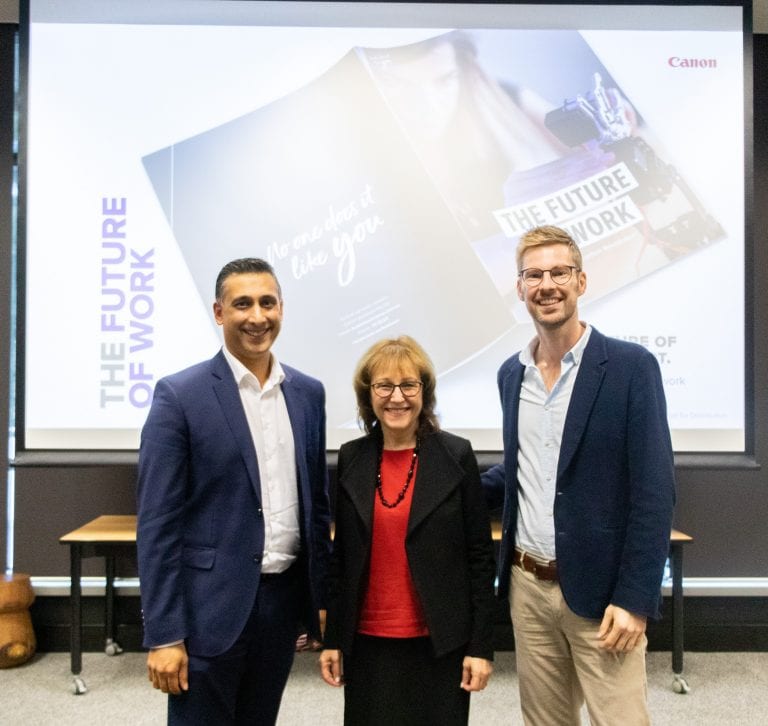Wellbeing and meaningful work

Which of these quotes can you most relate to from the corona pandemic?
“I´m not enjoying being at home. I´m not a home person.” Or, “I learned about myself that I can be on my own and actually enjoy it.”
From shocked CEOs to harassed Supermarket workers, stood-down Pilots, overwhelmed Doctors, and confused Graduate Trainees our global “meaning in disruption” research captured the emotional challenges that the pandemic threw at all of us. While it may seem like COVID-19 has had a uniformly negative effect on our wellbeing many participants also experienced surprising positive effects such as deep insights about themselves, finding new ways of balancing work and life, and new levels of resolve and confidence from how well they were coping in turmoil. When we dug a little deeper we discovered that our qualitative research confirmed an increasingly strong quantitative link in academic literature between meaningful work and wellbeing that has major implications for how Leaders help their organisations to emerge in better shape.
Those research participants that were still experiencing their work as meaningful in the pandemic saw the negative wellbeing challenges of WFH mitigated and were much more likely to view the situation positively. If you are a Leader research confirms that YOU are the greatest factor in your Team Members experiencing work as meaningful or meaningless. You have the power to positively or negatively impact the wellbeing of your team at work.
So, what can you do to promote positive wellbeing through meaningful work as we go back to the office? Below, we briefly explore two of the most prevalent meaningful work elements that are still being challenged in a disrupted world, show how they presented themselves in our research, and offer a three-step action plan for how Leaders can shape positive meaning and wellbeing.
Connection
“People are more openly supporting each other.”
We all suffered the shock of disconnection during lockdowns and WFH and we all came to realise just how important connection is to the very core of our wellbeing, and our humanity. We are social creatures and we simply need social connection to give life meaning. This is especially true in our work. Not surprisingly, this theme featured heavily in the comments of our research participants. Some described actual physical illness due to lack of connection, severe impacts on their mental health due to feeling isolated, and losing their sense of inclusion through lack of engagement with colleagues.
Connection with others plays a central role in helping us understand how our world fits together, make sense of the events that happen, and reconcile our place in it. When it comes to work, connection helps us to make sense and come to terms with big changes and the small day-to-day changes. Using social cues, we go through a sensemaking process of assessing what the events mean to us. This is a mostly automatic process and it is essential for constantly reconnecting with our work, directing our energy to what’s important, and feeling good about what we’re doing.
Academic texts can make this sound quite abstract, but Coronavirus has given us a really keen sense of what this looks and feels like in practice and it has played out quite starkly in real life. Most of us experienced some anxiety about “what will happen?”. Remember back to the uncertainties, the internal angst that is caused? Some organisations were front-footed in their communication and agile in their thinking on how to connect with their employees. They calmed the fears, kept everyone informed, and allowed for new ways to stay connected to each other. These organisations have not suffered the setbacks, decrease in engagement, and lack of discretionary effort that all come with disconnection. Those that were overwhelmed by the pandemic, left people floating in a vacuum, or didn’t react quickly to the remote working challenges are now dealing with disengagement problems and a knock-on effect on staff wellbeing.
Authenticity (and vulnerability)
“I know what I don’t want”
The pandemic has had a curious effect on authenticity at work. For nearly everyone the physical, emotional, and logistical challenges wrought upon us by a pandemic have also tested and made us aware of our values and what is genuinely important in our lives. Some of our research interviewees had to do things that went against our values as our companies faced financial pressures like the Travel Agent forced to withhold small print clauses to withhold refunds or the HR Directors being pressured to take a hard line on employee entitlements. Of course, these turned out to be quick ways to disconnect people from work and destroy meaning, self-esteem, and wellbeing at work all in one swoop. But, even in these situations the subjects became aware of what authentically feels right and what feels wrong. When our values are challenged it causes us to suffer existential crisis moments. For our research subjects these moments led to learning what was really important and resolving to fight for their values or move to another company that was better aligned.
Even more extraordinary was the global workspace phenomen of kitchen benches, bedrooms, and dining rooms becoming boardrooms overnight. We all opened up a zoom-window into our lives to colleagues and customers. With dogs barking, partners running through the room half-dressed, and children having meltdowns over Peppa Pig we have seen the “real people” behind our colleagues’ work facades. This forced a wave of authenticity where it suddenly became perfectly acceptable to be your normal self at work.
With this wave came a suite of equalising and humanising positive side-effects like being able to say we are not ok instead of struggling to paint a veneer of coping. What an amazing feeling that was for our research participants to discover that the colleague, boss, CEO, was also a human being going through the same human struggles!
Approximately a gazillion Wellbeing programs were created and fast-tracked in the pandemic. While these were (and still are) essential as a remedial offering to Employees to help them with in challenging times our research suggests that focussing an open, honest, and authentic conversation with a Leader can have a more powerful impact. This is especially effective in preventing meaninglessness, and mental wellbeing issues in the first place. It is in these authentic conversations where a Leader can act as a coach and guide that fear and anxiety are confronted and meaning is created.
Leadership actions
As we emerge from the pandemic and get back to the office the pace of organisational change is likely to move even faster. Now is exactly the right time Leaders to help their teams make sense of the new world and build an even better place to work. Our COVID-19 research clearly shows that there are three powerful and simple actions leaders can take right now to shape meaningful work experiences and improve the wellbeing of their teams:
- Communicate – Our research into the corona pandemic had one strong message that came through loud and clear – in uncertainty communication is absolutely critical. Often the reason for not communicating is the uncertainty itself. We, as Leaders, have a tendency to want certainty before we deliver a message. The opposite is what works best according to our research. Find whatever channel your team has the best access to, do it regularly, transparently, and honestly. If in doubt, assume that your team wants to know you have their back, you’re steering the organisation out of the pandemic, and you’re on the front foot. Employees need Leaders to be transparent about the business direction and foster trust by keeping them engaged and well-informed about all of the aspects of the business that impact them directly.
- Build a roadmap for the future – Build and communicate a roadmap for the organisation to thrive in the next phase as you plan for what work looks like in the future. Employees responded to the pandemic by pivoting to work remotely within 48 hours and they were instrumental in making the changes work. Now, they are trying to understand what the next phase of work looks like and they’d like to be part of the conversation.
- Design work around your employees – Giving your team a voice in the redesign of work is the best way to achieve authenticity and engagement in the future of your organisation. Ask employees some simple questions such as, what do they want from work? How do they want to work? Where do they want to work? What do we need to keep, stop, or start doing? Listen and build the response into the plans for the new BAU. Building a flexible culture where employees feel they can be trusted to work anywhere and be responsible for the design of their workday is essential.
The employee experience for 2021 is being created now, let’s make it a proactive response to how your team wants to work. If you would like a conversation with our team about how you can build meaningful work and promote wellbeing, click here to make an appointment for a coffee chat or Zoom call and see the full insights from our research.






